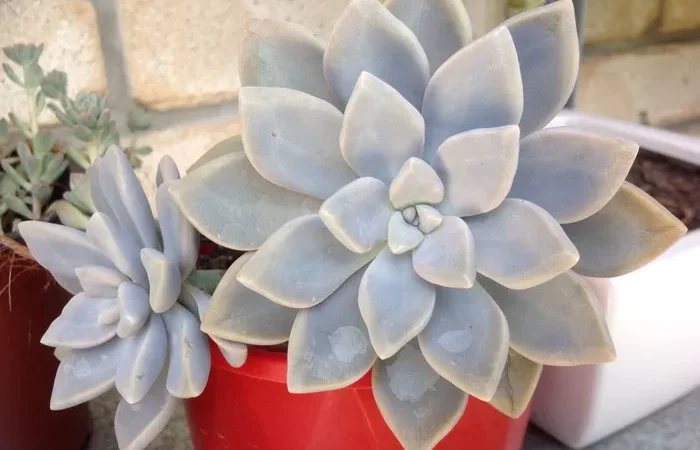The jade plant, also known as Crassula ovata, is a popular succulent known for its attractive, fleshy leaves and ease of care. Many plant enthusiasts and homeowners wonder if this beloved houseplant also functions as an effective air purifier. In this article, we will explore the jade plant’s air-purifying capabilities, its benefits, and its role in improving indoor air quality.
Understanding the Jade Plant
The jade plant is native to South Africa and Mozambique. It is characterized by its thick, round leaves that resemble jade gemstones, giving it its name. This succulent is often grown as a decorative plant due to its attractive appearance and low maintenance needs. The jade plant thrives in bright, indirect light and requires minimal watering, making it an ideal choice for indoor environments.
Air Purification and Houseplants
Air purification is a topic of considerable interest, particularly in the context of indoor environments. Houseplants are often celebrated for their ability to improve indoor air quality by removing toxins and increasing oxygen levels. Research conducted by NASA in the late 1980s suggested that certain houseplants could effectively filter out volatile organic compounds (VOCs) such as benzene, formaldehyde, and trichloroethylene.
The Jade Plant’s Air-Purifying Abilities
While the jade plant is not as well-studied as some other houseplants in terms of air purification, it does have some properties that contribute to a healthier indoor environment. Here are a few points to consider:
Absorption of Carbon Dioxide and Release of Oxygen: Like all plants, the jade plant absorbs carbon dioxide (CO2) and releases oxygen (O2) through the process of photosynthesis. This contributes to a slight improvement in indoor air quality by increasing the oxygen levels in the space.
Adaptability to Indoor Conditions: The jade plant’s ability to thrive in various indoor conditions, such as low light and dry air, makes it a practical choice for many homes. By maintaining a healthy jade plant, you can enjoy its aesthetic benefits without having to worry about complex care routines.
Reduction of Indoor Humidity: The jade plant may help in reducing indoor humidity to some extent. Plants release moisture into the air through a process called transpiration. This can contribute to a more balanced indoor humidity level, which can have indirect benefits for air quality and overall comfort.
Comparing the Jade Plant to Other Air-Purifying Plants
To understand the jade plant’s effectiveness as an air purifier, it’s helpful to compare it with other well-known air-purifying plants. Some of the most effective air-purifying plants identified in scientific studies include:
Spider Plant (Chlorophytum comosum): Known for its ability to remove formaldehyde and xylene from the air.
Peace Lily (Spathiphyllum spp.): Effective at removing pollutants like benzene, formaldehyde, and trichloroethylene.
Snake Plant (Sansevieria trifasciata): Renowned for its ability to filter out formaldehyde, benzene, and other toxins.
Compared to these plants, the jade plant is not as effective at removing specific air pollutants. However, it can still contribute to a healthier indoor environment in other ways, such as enhancing aesthetic appeal and potentially improving air quality through general processes.
Benefits of Having a Jade Plant
While the jade plant may not be the most potent air purifier, it offers several other benefits that make it a valuable addition to any indoor space:
Low Maintenance: The jade plant requires minimal care, making it suitable for busy individuals or those new to plant care. It is tolerant of irregular watering and can thrive in less-than-ideal light conditions.
Aesthetic Appeal: With its glossy, green leaves and attractive growth habit, the jade plant adds a touch of natural beauty to any room. It is a popular choice for home decor and office spaces.
Symbolic Meaning: In many cultures, the jade plant is considered a symbol of good luck, prosperity, and positive energy. It is often given as a gift or placed in homes and businesses to attract good fortune.
Improved Indoor Air Quality: While its air-purifying capabilities may not be as pronounced as some other plants, the jade plant still contributes to a healthier indoor environment through its basic functions as a living organism.
Caring for Your Jade Plant
To ensure that your jade plant remains healthy and continues to contribute positively to your indoor environment, proper care is essential. Here are some key tips for caring for a jade plant:
Light: Provide bright, indirect light for your jade plant. While it can tolerate lower light conditions, it thrives best in bright environments.
Watering: Water the jade plant sparingly, allowing the soil to dry out between waterings. Overwatering can lead to root rot, so it is crucial to avoid excessive moisture.
Soil: Use well-draining soil, such as a cactus or succulent mix, to prevent waterlogging. Proper drainage is vital for the health of the jade plant.
Temperature: Keep the jade plant in a temperature range of 60-75°F (15-24°C). It is sensitive to extreme temperature fluctuations and should be protected from frost.
Fertilizing: Feed the jade plant with a balanced, water-soluble fertilizer every 4-6 weeks during the growing season (spring and summer). Reduce fertilization in the winter months.
See also: How to Propagate a Succulent Leaf
Conclusion
In summary, while the jade plant may not be the most effective air purifier compared to some other houseplants, it still offers several benefits that make it a valuable addition to any indoor space. Its low maintenance requirements, aesthetic appeal, and symbolic meaning contribute to its popularity among plant enthusiasts. By maintaining a healthy jade plant, you can enjoy its beauty and subtle contributions to a healthier indoor environment.
For those seeking a powerful air purifier, incorporating a variety of houseplants known for their specific air-purifying abilities may be beneficial. However, the jade plant remains a cherished and worthwhile addition to any home for its many other qualities.


